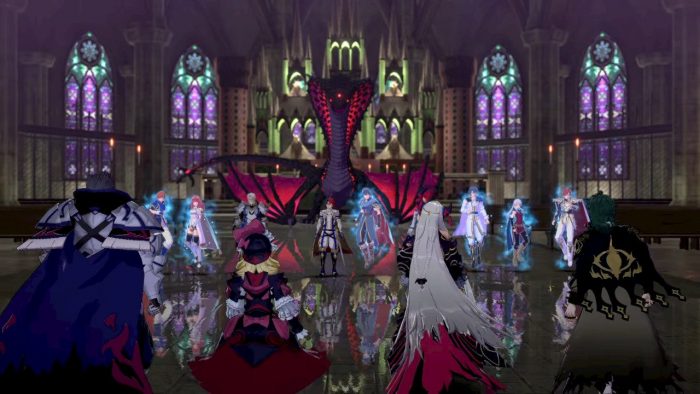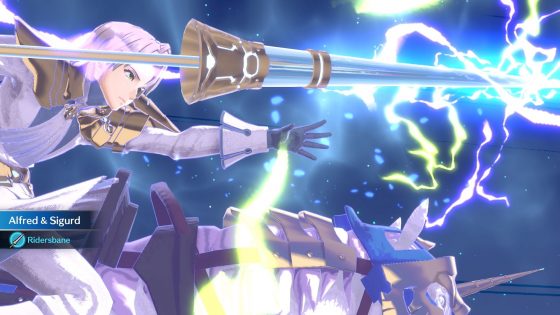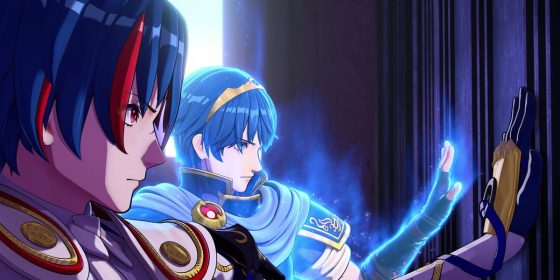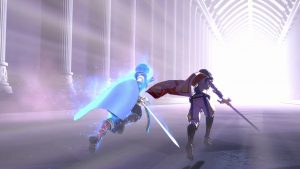
-Major Spoilers Ahead!-
Fire Emblem: Engage, the newest entry into the long-running Fire Emblem franchise of strategy RPGs, has a unique central mechanic where units can use special rings to borrow the powers of the protagonists from previous games. It’s a cool idea for an anniversary title and generally works very well, but about halfway through the game, something happens. They take the rings away.
And it’s not just for one map, either. You get new rings over the next few chapters, but won’t get the first of your original six back until at least 10 hours of playtime later, and the last one only returns shortly before the final boss. This has a tremendous effect on how you play the game, but is it a well-implemented way to make you rethink your strategy, or is it an overly harsh punishment that makes certain units unusable? Let’s talk about whether Fire Emblem: Engage’s mid-game twist actually works.
The Power of the Emblem Rings

The Emblem rings are extremely powerful, especially if you’ve unlocked all of their abilities by using them for a long time. Sigurd’s “Momentum” makes cavalry and flying units hit like a freight train, Micaiah turns anyone into a cleric/mage, Roy’s “Hold Out” makes a tough but fragile unit into a brick wall, and so on. You can also have characters use points earned from participating in battles to inherit some of an Emblem’s skills to use on their own even if they don’t have that ring equipped, which allows you to customize your army for all kinds of different strategies if you allocate these slots carefully.
Unfortunately, this means that units without Emblem rings or inherited abilities are weaker, almost to the point of being unusable on harder difficulties. And since the rings are taken away before you’ve had the opportunity to inherit many skills or diversify units beyond the rings you usually use with them, this suddenly makes some of your most reliable characters into benchwarmers. Reclassing isn’t as helpful as it is in other titles and you can’t inherit skills from Emblems that have been taken away, so you’re out of luck there, too. The game introduces many new characters with their own rings shortly after this, so if you want to keep using members of your original team, you have to either confiscate those new rings (with their own unique sets of powers) for them or else just stubbornly keep leveling them up alongside your new allies so that they’re ready for when they get their rings back.
Kicking the Player’s Crutch Away

The most generous interpretation of this twist is that it’s an instance of kicking the player’s crutch out from under them to force them out of complacently drifting through the game using the same strategy over and over. Eventide Island from The Legend of Zelda: Breath of the Wild, the Freelancer mode of Hitman 3... it’s even been done in the Fire Emblem series before, such as the beginning of Fates’ Revelations route or the Cindered Shadows DLC of Three Houses. Those challenges were fun and rewarding, so why does Engage’s version feel so much meaner?
First of all, the examples we mentioned are all relatively short, completely optional, or both. The harsh restrictions of these gameplay segments don’t overstay their welcome and less skilled players don’t have to worry about them very much. But even if you’re just following the critical path of Engage and not doing much side content, you’ll still be waiting a very long time to get even the first of the original rings back.
Secondly, and more importantly, these examples all enforce important themes within their games. Eventide Island and Freelancer mode make you use the environment to your advantage – a major element in both games that you can sometimes forget when you have a whole arsenal at your disposal. Fates’ Revelations route starts by temporarily taking away all but a tiny handful of your allies, emphasizing how you’ve alienated yourself from both sides and will need to gain their trust back. And Cindered Shadows uses its difficult maps and limited resources to show how things are much rougher and tougher down in Abyss.
Engage’s twist doesn’t really enforce anything. It comes out of nowhere, so it’s not like the player or Alear did anything to deserve this, and it doesn’t make you think about your strategy in new and interesting ways. In fact, it tacitly encourages you to discard your old units for the fresh ones they give you, going against the story’s themes of friendship and unity. For some players, this could be a ragequit moment, and we wouldn’t blame them.
What They Could’ve Done Instead

So what would’ve been a better way to do this ring-stealing twist? Well, the game actually does a better version of it much later on, when you have to get the rings back after Alear is revived as a Corrupted. You get them all back on the same map, although they can’t talk and you can’t use them at their full power because Alear’s Divine Dragon abilities are gone (for the moment). This feels like far too little too late in the game itself, particularly since it’s the second of three (!) times that you lose the rings, but imagine if something like this had been the original implementation. It would’ve been an appropriately shocking moment that temporarily takes your crutch away, while still allowing you to keep the team you’ve worked so hard to build.
In addition, the game could take away just one ring for a long time – the Emblem of Beginnings, Marth. This is the Emblem that Alear has relied on as a friend and confidant (if we’re giving the writing more credit than it really deserves), so taking Marth away would give Alear a crisis of confidence. Everyone else would still have their Emblems, so without Marth, Alear would feel like less of a capable leader and would need to learn to stand on their own until they’re strong enough to get Marth back with their own power.
Lucina can still come in as a replacement later, or else maybe Alear can actually learn how to turn into a dragon, but the purpose of these new powers would be to give Alear their own identity outside of Marth. You as the player would still need to rethink your strategy, but only for the main character instead of your entire army. And by forcing the other characters to carry Alear for a map or two until they get their new abilities, it would enforce how they have to change in order to grow. By the time Alear finally reunites with Marth, the choice of whether or not to re-equip his ring would feel much more meaningful on both a story and gameplay front. Have you grown past your need for Marth and embraced a new playstyle, or do you want to rekindle that relationship and discover what new powers you can unlock?
Final Thoughts
All in all, we think that the mid-game twist of taking the original six rings away is a very harsh punishment that does far more harm than good. Though there are ways it could’ve been done well, the version we got just didn’t hit the mark. But what do you think about Fire Emblem: Engage’s twist? Do you disagree with us? Let us know in the comments, and thanks so much for reading!
Recommended Post
Here's Why Fire Emblem: Engage's Story is So Frustrating
Recommended Post
Fire Emblem: Engage - Nintendo Switch Review
Recommended Post
In What Order Should You Play Fire Emblem: Three Houses?
Recommended Post





